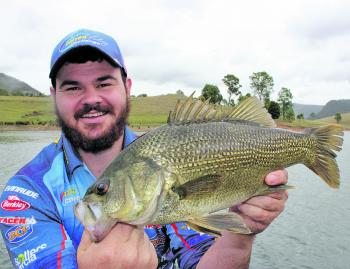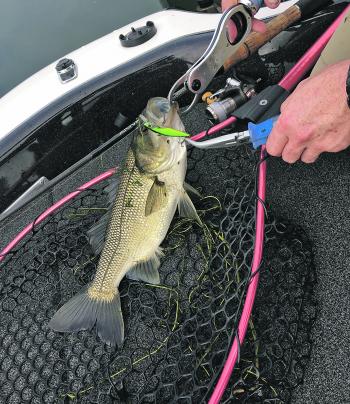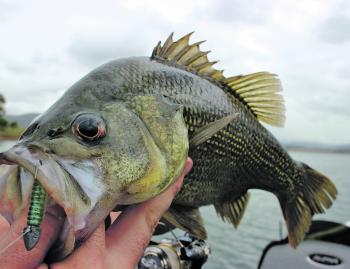May is usually the time we start seeing some frosts in the Hunter Valley. These cold nights and mornings really start to bring down the water temperatures. This is when we start to see the fish move into their prominent winter patterns. This cooler water in the impoundments will hopefully bring the fish up shallower in the water column, making them easier to catch.
Lake Glenbawn can start to fish well at this time of year. There is a typical winter edge plastic bite that happens every year, and May is the month to try it. A 1/4oz jighead with a 2-3” paddle-tail plastic or grub is deadly for casting the edges. These plastics perfectly represent the primary bait in these waters, which is smelt, gudgeon or minnows.
There will be a lot of fish sitting in 20ft of water and they should be easy to find, virtually spread throughout the whole lake at this time of year. These fish in 20ft move up into the shallows to feed in low light situations, such as early morning and late evening.
A good long cast can be made up towards the edge. Keep your rod tip up to control the depth your plastic is running at, and try and follow the contour of the bottom all the way back towards the boat with a nice slow roll. Some little twitches can be thrown into your retrieve if the slow roll is not getting action.
If it is sunny and calm, try focusing on bottom contact more often. Allow your plastic to hit the bottom, then twitch it up a few feet. Let it fall back again, similar to a flathead retrieve.
For evenings, cast out parallel to the bank and focus on the fish you can see beneath you in 20ft. A jerkbait will work too for early mornings and in low light when the fish are high in the water column.
Another handy plastic to try is a 2-3” stickbait on a 1/16-1/8 jighead. These plastics imitate a dying baitfish and the light head is needed to not send them plummeting too quickly. Twitch them up then let them sink on slack line.
There will always be deeper schools at Glenbawn in 40-80ft of water. A slow rolled plastic or ice jig worked in their face works really well. Small slender blades can also be worth a try on the shallow and deep fish.
Lake St Clair’s fish will follow a very close pattern to Glenbawn at this time of year. The fish will start to focus on smaller lures and be less inclined to hit a reaction style bait. Small plastics, jerkbaits, ice jigs and blades will be your main staples for putting fish in the boat. The weed beds got hammered from dropping levels over the end of summer. Hopefully the autumn rains have maintained the levels and we haven’t lost them all.
On a lighter note, the less weed, the easier it is to fish. Fish your jerkbait and plastics up in the shallows in low light and focus on moving deeper and more parallel to the bank as the sun gets up. Weedless rigged plastics are handy for putting your lure where the standard jighead cannot go. Focus on the holes and pockets in the weed.
Out deeper you will find schools anywhere from the shallow flats in 20ft out to suspended in 80-100ft of water. An ice jig can quickly work out whether these fish are active. If the ice jig fails, try slowing down with a plastic or slow roll a blade.
The majority of the bass in the river systems will have started their migration downstream at this time of year. While perhaps not as aggressive as the summer bite, they can be still caught. Focusing in the tidal areas in the lower Hunter, you will find fish starting to school.
Trolling small deep divers is a handy way of covering water and locating fish schooled in any holes. Several passes can be made over the school to keep catching them, or you can catch one and stop and cast around the area. Small blades and paddle-tail plastics worked into the deeper sections will catch these schooled fish as well.
You can also try fishing the shallower cover around timber and rock. Casting accuracy is very important when targeting the shallow structure in the tidal areas. Focus on cover that breaks the current flow and gives something for the fish to sit behind to ambush prey.
Reads: 1229
Dom Jordan with a shallow water bass from St Clair.

There will be plenty of bass to jerkbait around the weed beds.

A small paddle-tail plastic perfectly imitates a baitfish for this time of year.




